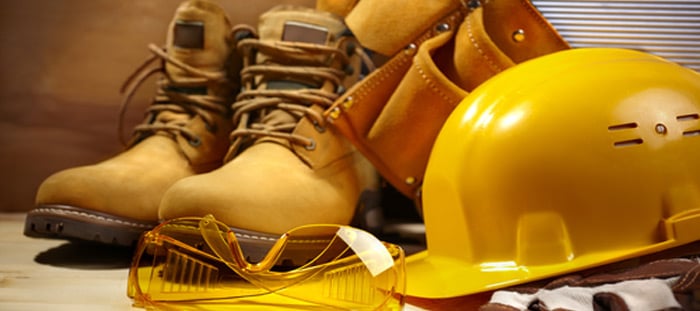Can you think of a commercial construction project that has been completed without the use of hand tools or power tools? Yeah, neither could I. Maybe it’s our familiarity with them or the fact that they are such a commonplace item on the construction site that hand tool and power tool safety often gets overlooked. Hand tools and power tools present a host of potential hazards such as flying objects, electrical shock, falling objects, punctures and lacerations. Here are 10 quick and easy tips for safely working with hand and power tools.
Inspect your tools. Never issue or use a damaged or defective hand or power tool. Always inspect your hand and power tools before and after each use to ensure they are in good working order. Check for cracked or loose handles on hand tools and make sure all guards, safety switches, electrical and hoses are in good condition. Tag any damaged tools and remove them from use until they can be repaired.
Pick the right tool. Make sure you are using the correct tool for the task at hand. Don’t use a screwdriver as a pry bar or chisel. This also means using the right sized bits, blades and accessories on your power tools. Don’t get creative if you don’t have a tool you need. Using the wrong tool can lead to injury or damage to the tool.
Wear your PPE. Issue personal protective equipment to your employees and make sure they wear them properly. This includes items like safety goggles, face masks, ear plugs, hard hats and work gloves. Avoid wearing loose clothing or jewelry that could impede your work or get caught in any moving parts on power tools.
Don’t alter your tools. Never remove guards or disable safety devices on power tools. Don’t paint or cover up your tools as this could prevent you from noticing chips or cracks in your tools. If a tool is damaged or broken during use, don’t attempt to make an on the spot repair if you don’t have the right parts or tools to do so. This is one of those few instances where duct tape is not the answer.
Handle with care. Tools are not toys. Never throw or toss a tool in the direction of or directly to a coworker. Don’t use electrical cords to lower or lift a tool to get it to a workspace. Always carry tools in a toolbox or on a tool belt, never shove a tool in your pocket if you are going to be walking around. Keep your finger off the trigger of power tools when moving about to avoid accidental discharge.
Keep your distance. When working with hand and power tools be sure you have enough room to safely operate without coming into contact with other objects or coworkers. If you are working at height, make sure there isn’t anyone working beneath you in the event you drop a tool. When using something like a nail gun, check to see that everyone is clear of your line of sight in the event of an accidental discharge or misfire.
Pick up after yourself. Don’t leave unused tools lying around the jobsite. They can create tripping hazards or accidentally get knocked on someone’s head. Establish a check-out/check-in for company-owned tools to avoid accidents and to keep tools from mysteriously walking off the jobsite.
Unplug and disconnect. Don’t leave electric power tools plugged in when not in use or when making adjustments such as replacing blades or bits. Disconnect pneumatic tools from the air line when loading fasteners or when not being used to avoid accidental discharge. Never leave unattended tools plugged in to avoid injuries by untrained workers. Always unplug and disconnect when moving the tool to a new location.
Keep your workspace clean. A cluttered floor can lead to accidental trips or falls which can be extremely dangerous when working with hand and power tools. Avoid working in wet conditions when working with electric power tools. Keep all power cords and air lines out of the way as much as possible to avoid getting tangled up or tripping a coworker.
Get trained up. Make sure you and your employees are thoroughly trained on the proper use of hand and power tools. Employees should know how to safely operate the tools they are required to use on the job. This includes knowing which PPE is required to be worn when working with specific tools.
Work Smart, Be Safe!
Need more project leads? ConstructConnect finds you the best construction projects to bid on and win more work.

